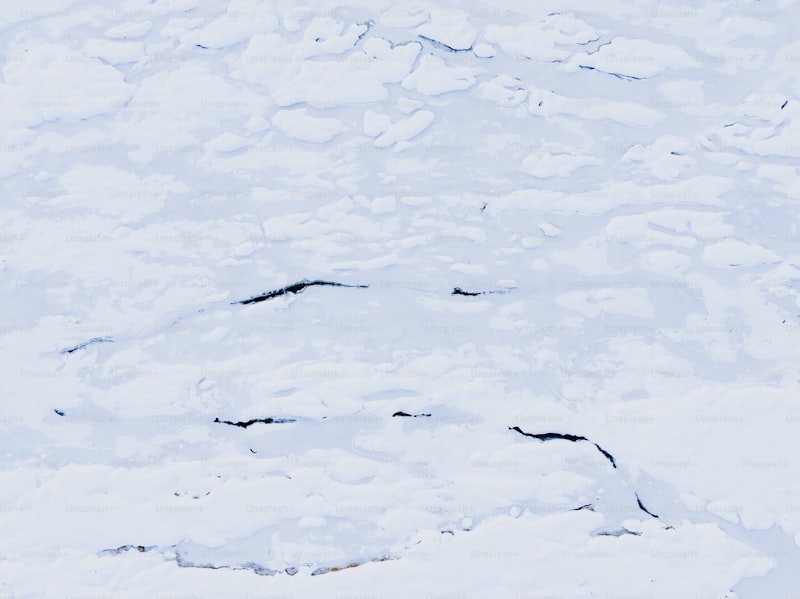In this icy wilderness, the Arctic fox reigns supreme, its fluffy white coat a perfect camouflage against the snow. Adapted to survive in temperatures that plunge far below freezing, this cunning predator roams the tundra in search of lemmings and small rodents. Its ability to change fur color with the seasons from brown to white ensures it blends seamlessly with its surroundings year-round.
Beneath the frozen surface of the Arctic Ocean, another marvel awaits: the narwhal, often dubbed the unicorn of the sea. This elusive creature sports a long, spiraled tusk protruding from its head, reaching lengths of up to ten feet. Scientists believe the narwhal’s tusk may play a role in mating rituals or as a sensory organ, but its true purpose remains shrouded in mystery.
Venturing into the frigid waters surrounding the Arctic, one encounters the ethereal beauty of the sea butterfly, a delicate marine snail that glides effortlessly through the icy depths. With translucent wings resembling the flutter of a butterfly, this tiny creature serves as a vital link in the Arctic food chain, feeding on phytoplankton and becoming prey to larger predators like whales and seabirds.
On land, the Arctic hare defies the odds with its ability to survive in temperatures as low as minus fifty degrees Celsius. With oversized hind legs built for speed, it darts across the frozen landscape, evading predators such as the Arctic fox and snowy owl. Its dense fur coat provides insulation against the biting cold, ensuring its survival in this harsh environment.
The Arctic Circle, with its stark beauty and unforgiving climate, remains a sanctuary for these and countless other extraordinary creatures. Each one has evolved unique adaptations to thrive in a land where few others dare to tread, reminding us of nature’s boundless creativity and resilience in the face of adversity.
Arctic Oddities: Unveiling the Bizarre Creatures That Thrive in Extreme Cold

Imagine a world where fish with antifreeze proteins coursing through their veins roam freely. These remarkable Arctic fishes prevent ice crystals from forming inside their bodies, allowing them to thrive in waters that would be fatal to most other fish species. It’s a survival strategy perfected over millennia of evolution, where adaptation to extreme cold is not just a luxury but a necessity.
Not far from these icy waters, polar bears reign as the Arctic’s apex predators. These massive carnivores are perfectly suited to their frozen habitat, with thick layers of insulating fat and a keen sense of smell that can detect seals—their primary prey—from kilometers away. It’s a testament to nature’s ingenuity that these bears can survive and even thrive in a climate that challenges the limits of what life can endure.
But it’s not just the large and charismatic animals that define Arctic oddities. Tiny creatures like Arctic woolly bear caterpillars, with their frozen winters and brief, intense summers, have adapted to spend nearly 14 years frozen solid. When warmer temperatures finally arrive, they thaw and continue their life cycle with astonishing resilience, a testament to the wonders of Arctic adaptation.
In the air above, snowy owls silently glide across the tundra, their white plumage blending seamlessly with the snow-covered landscape. These majestic birds of prey are built for stealth and survival, hunting small mammals and birds with a precision that belies their graceful appearance.
Meet the Arctic’s Hidden Marvels: Strange Creatures Beyond Imagination
In this icy expanse, the Arctic’s strange creatures captivate with their unique adaptations. Take, for instance, the Arctic jellyfish, a translucent beauty drifting gracefully in frigid waters. Its ethereal appearance and ability to survive in near-freezing temperatures evoke both curiosity and admiration. How does such delicate grace endure in the harsh Arctic environment?
Moving deeper into the Arctic’s mysteries, one encounters the elusive yet majestic narwhal. Often dubbed the “unicorn of the sea,” this whale species boasts a long, spiral tusk protruding from its head, a feature that remains an enigma in scientific circles. Is it for navigation, communication, or even as a sensory organ? The narwhal’s tusk continues to intrigue researchers seeking clues to its purpose in the vast Arctic seas.
Beyond the narwhal, the Arctic fox commands attention with its resilience and striking beauty. Adapting its fur from summer brown to winter white, this cunning predator thrives in temperatures that plummet far below freezing. Its ability to hunt in snow-covered landscapes showcases nature’s brilliance in equipping species for survival against all odds.
Imagine the Arctic as a gallery of evolutionary masterpieces, each creature sculpted by millennia of adaptation to its icy home. From the stoic polar bear to the nimble Arctic hare, every inhabitant contributes to the region’s ecological tapestry in ways that resonate with the world beyond.
From Ice Goblins to Deep-Sea Dwellers: Exploring Arctic’s Alien Fauna
Have you ever wondered what strange creatures lurk beneath the icy depths of the Arctic Ocean? From the enigmatic “Ice Goblins” to the elusive deep-sea dwellers, the Arctic is home to a myriad of alien-like fauna that defy imagination. These creatures have adapted to survive in one of the harshest environments on Earth, showcasing nature’s incredible resilience and creativity.
One of the most bizarre inhabitants of the Arctic waters is the “Ice Goblin,” a translucent jellyfish-like creature with iridescent hues that shimmer like the Northern Lights. Its delicate tentacles dance gracefully in the frigid waters, capturing tiny plankton as its primary food source. Scientists believe its ethereal appearance could be a result of evolutionary adaptations to blend in with the icy surroundings, providing both camouflage and a mystical allure.

Venturing deeper into the Arctic abyss, you’ll encounter creatures straight out of a science fiction novel. Bioluminescent fish illuminate the darkness with their otherworldly glow, navigating the icy waters with ease. These deep-sea dwellers have evolved to withstand extreme pressure and near-freezing temperatures, surviving in an environment where few organisms dare to thrive.
Imagine a world where giant sea spiders with leg spans rivaling that of a human hand skitter across the ocean floor, hunting for prey in the shadows. These arachnid-like creatures possess a haunting beauty, their translucent bodies revealing intricate internal structures adapted for life in perpetual darkness.
Exploring the Arctic’s alien fauna is like stepping into a realm where reality and fantasy converge. It challenges our perceptions of what life can endure and evolve into, reminding us of the boundless wonders that await discovery in Earth’s most extreme environments.
Frosty Wonders: The Arctic’s Most Mysterious and Rarely Seen Creatures
Among the Arctic’s most enigmatic inhabitants are the narwhals, often referred to as the unicorns of the sea. With their long, spiral tusks protruding from their heads, they navigate the frigid waters with grace and mystique. These gentle giants, shrouded in legend and myth, inspire awe among scientists and storytellers alike.
Equally captivating are the elusive Arctic foxes, whose thick, snowy coats blend seamlessly with the icy terrain. These cunning predators are masters of survival, adapting their diet and behavior to thrive in temperatures that plummet far below freezing. Their resourcefulness and adaptability make them a symbol of Arctic resilience.
Beneath the frozen surfaces of Arctic waters, the Greenland sharks lurk, ancient behemoths that defy age with lifespans spanning centuries. These deep-sea giants embody the mysteries of the Arctic depths, their sluggish movements belying their incredible endurance and survival strategies.
In the skies above, the ivory gulls glide effortlessly, their pure white feathers stark against the polar skies. These resilient birds endure some of the harshest conditions on Earth, symbolizing purity and adaptability in the face of extreme adversity.
Each of these creatures, from the narwhals beneath the ice to the ivory gulls soaring above, contributes to the Arctic’s rich tapestry of life. Their existence is a testament to nature’s ingenuity and the delicate balance of ecosystems in the world’s northernmost reaches. Exploring their habitats and behaviors unveils a world of wonder and discovery, where survival is an art and adaptation is the key to existence.
Beyond Polar Bears: Discovering the Arctic’s Strangest Inhabitants
Among these extraordinary inhabitants is the Arctic fox, a creature whose fur changes color with the seasons, blending seamlessly into the snow-covered landscape to evade predators and sneak up on prey. Known for its resourcefulness, the Arctic fox survives by scavenging on the leftovers of larger predators like polar bears and hunting small mammals beneath the snow.
Beneath the icy waters, the narwhal stands out as one of the Arctic’s most enigmatic creatures. Often referred to as the “unicorn of the sea,” this whale species possesses a long, spiraled tusk protruding from its head, believed to play a role in mating rituals or possibly even in navigating through dense ice.
Venturing into the skies above, the Arctic tern completes one of the longest migrations of any animal on Earth, traveling from its breeding grounds in the Arctic to its wintering grounds off Antarctica and back each year. This incredible journey showcases the tern’s endurance and navigational prowess, relying on celestial cues and weather patterns to cover thousands of miles.
In the frigid depths of the Arctic Ocean, the hooded seal surprises with its inflatable nasal cavity, which males use to produce loud calls during mating displays. These unique adaptations highlight the seal’s resilience in a harsh environment where finding a mate and defending territories are crucial for survival.
Exploring the Arctic unveils a world where survival hinges on adaptation and innovation. From the elusive narwhal to the hardy Arctic fox, each species embodies nature’s ability to thrive in extreme climates. Beyond the polar bears that symbolize the region’s wilderness, these lesser-known inhabitants contribute to the rich tapestry of life in the Arctic, offering insights into evolution and the interconnectedness of ecosystems in the world’s northernmost reaches.
Frequently Asked Questions
What are some lesser-known Arctic species that are particularly fascinating
Explore a curated list of lesser-known Arctic species that captivate with their unique adaptations and behaviors. Discover fascinating creatures rarely seen outside their icy habitats.
Which Arctic animal has the most surprising behavior or lifestyle
Learn about the fascinating behavior and lifestyle of Arctic animals, uncovering surprising facts that highlight their unique adaptations to extreme environments.
What unique adaptations do Arctic creatures have to survive extreme cold
Discover how Arctic creatures survive extreme cold with unique adaptations such as thick insulating fur, compact bodies to conserve heat, specialized circulation systems to keep extremities warm, and behavioral strategies like huddling for warmth.
How do Arctic creatures contribute to their ecosystems
Learn how Arctic creatures play crucial roles in their ecosystems, ensuring biodiversity and ecological balance through adaptations that sustain life in extreme cold climates.
How are Arctic creatures affected by climate change?
Learn how Arctic creatures are impacted by climate change, exploring shifts in habitat, food sources, and survival challenges due to warming temperatures.


